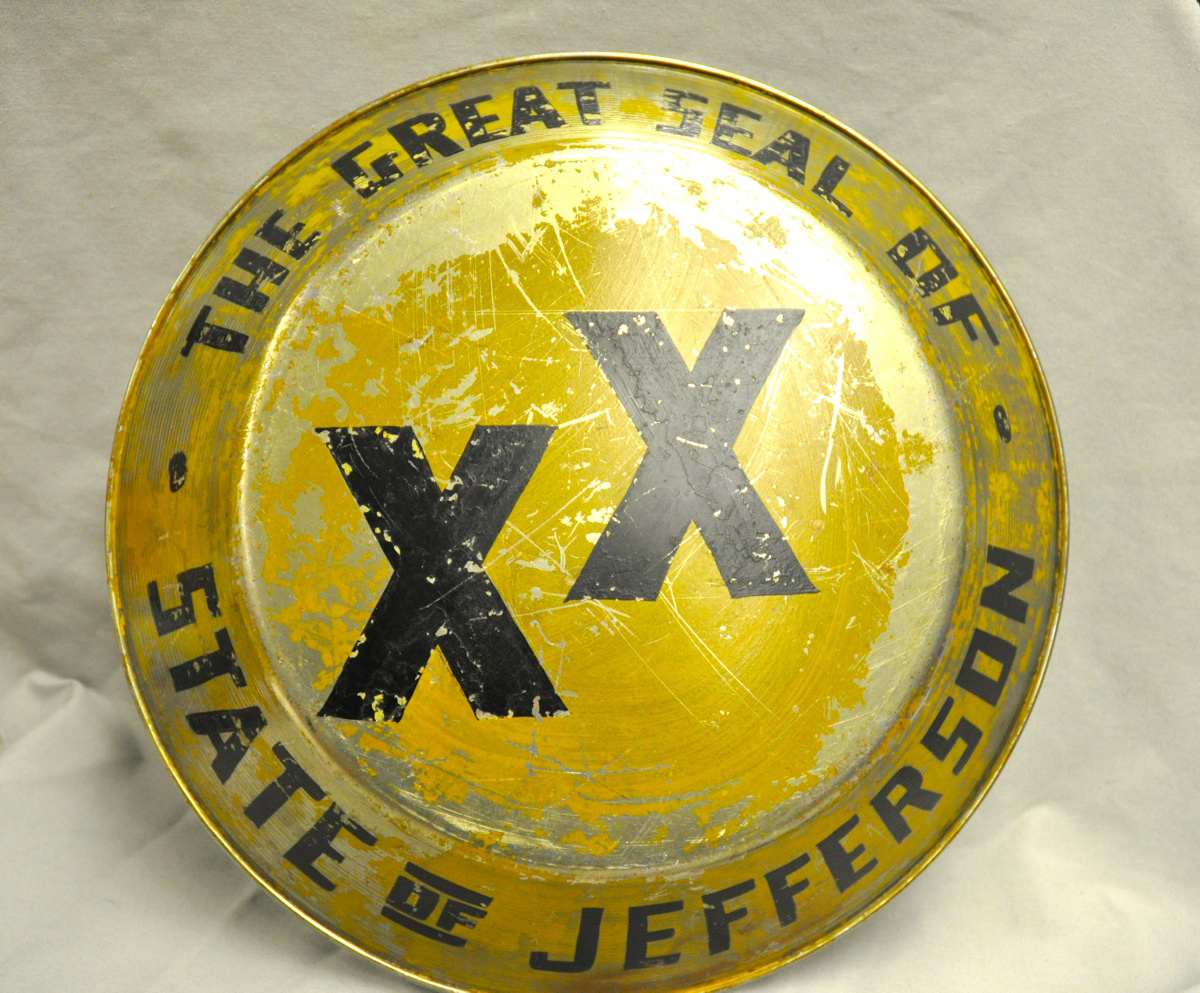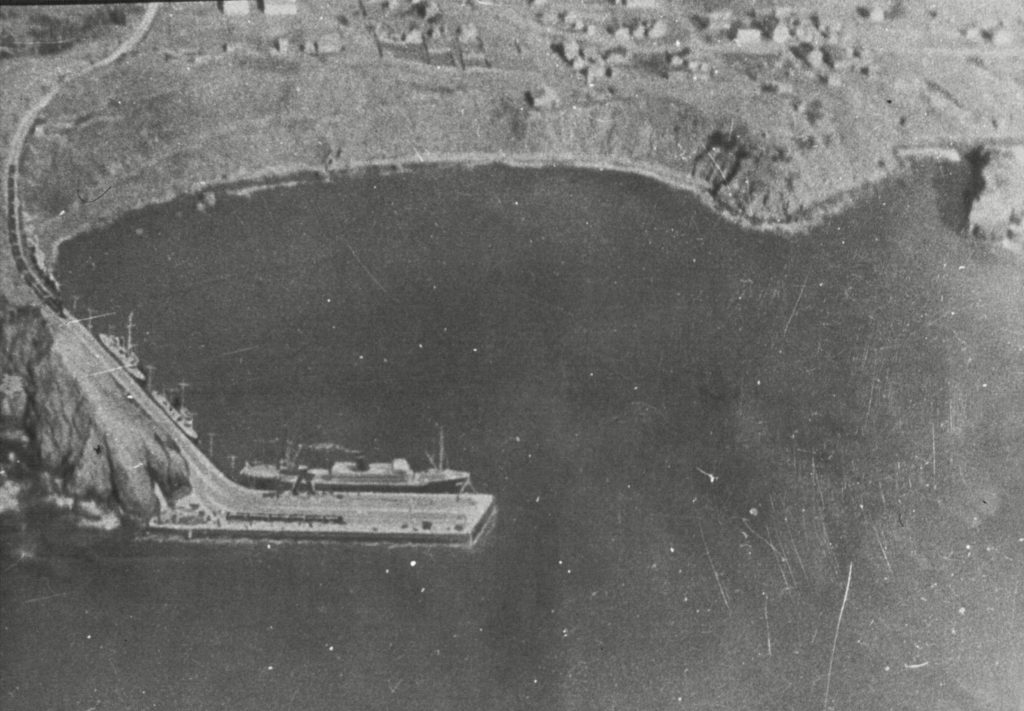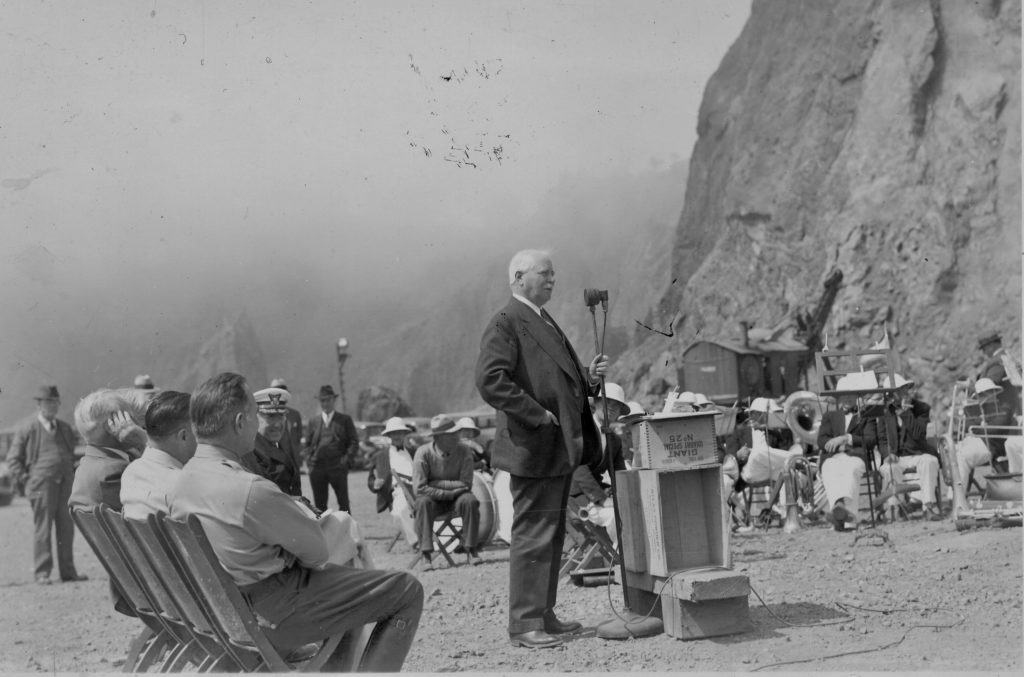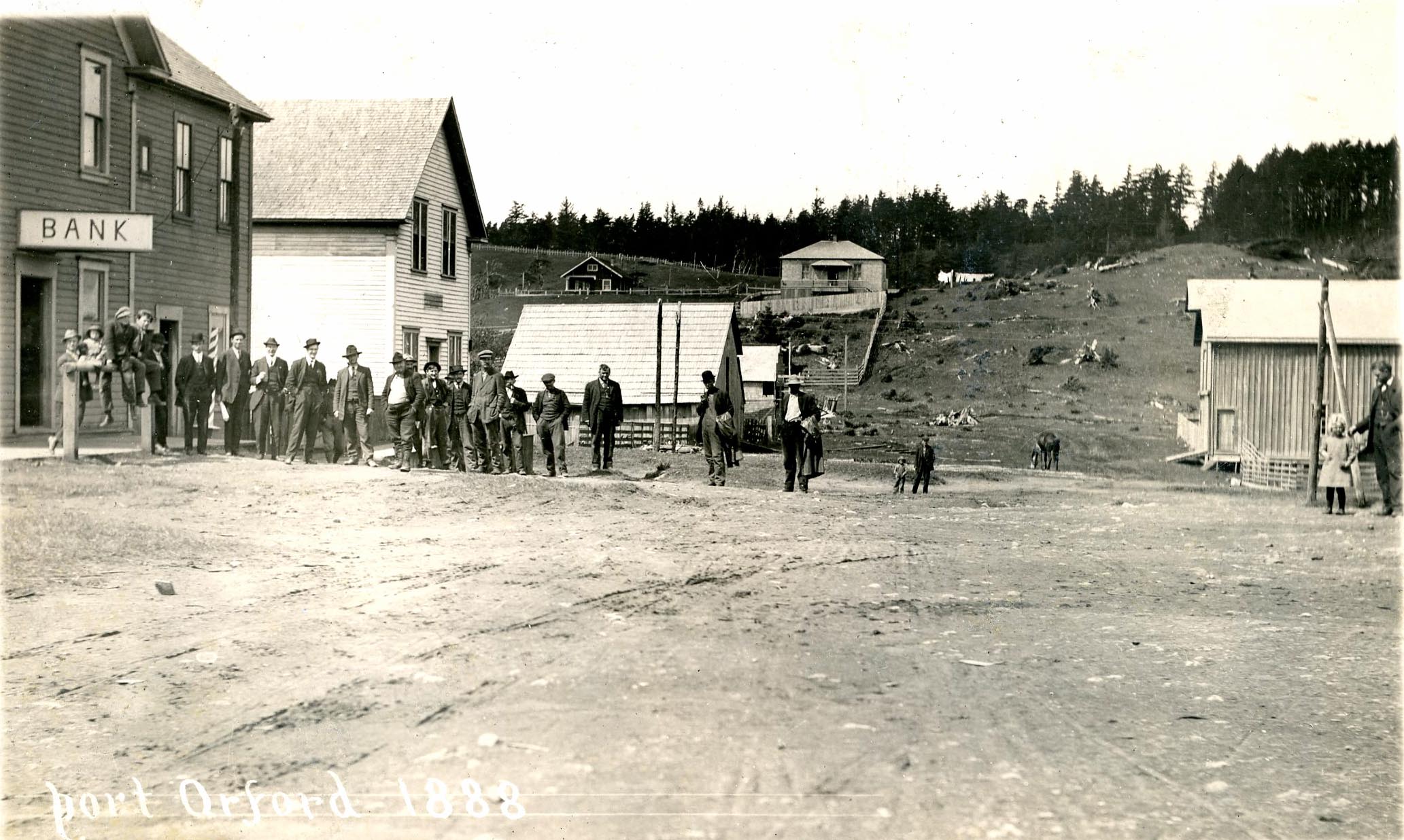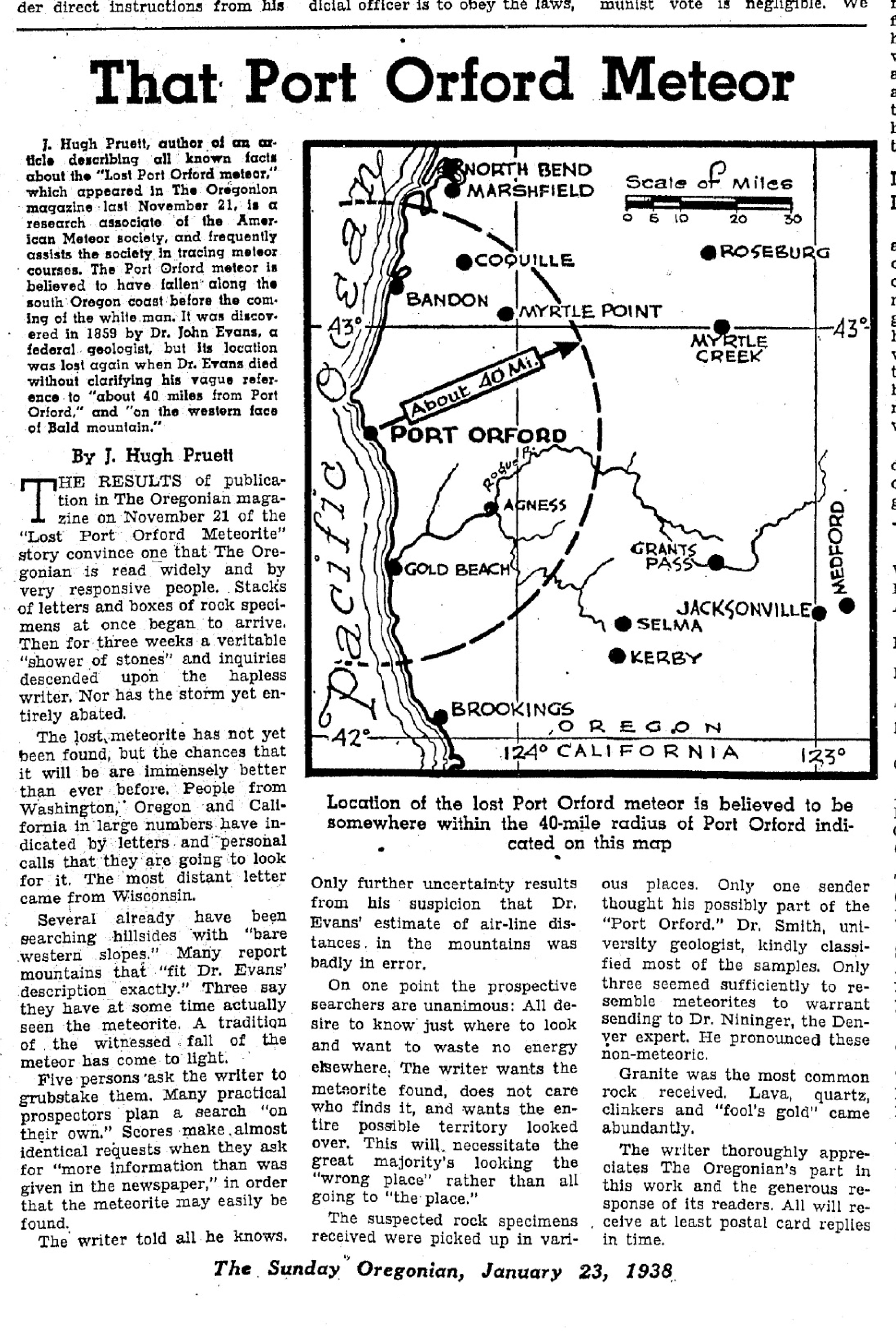Although Gilbert Gable lived in Oregon for only a few years, he gained notoriety in the state, both as mayor of Port Orford and as the originator and main promoter of the 1941 secession of the State of Jefferson from Oregon and California.
Born in Shamolkin, Pennsylvania, in 1886, Gable briefly worked in a coal mine, quickly rising to management. He moved to Philadelphia, where he was involved in publicity campaigns and booster activities for the city and worked for the public relations department of Bell Telephone Company as part of a successful effort to soften its reputation as a cold-hearted monopoly. During World War I, Gable was publicity director for eastern Pennsylvania's Third Liberty Loan campaign and performed other public relations work for the U.S. Treasury Department.
Gable married Paulina Stearns, the daughter of a wealthy Michigan lumberman. During the late 1920s, possibly with the financial help of her family, Gable produced a documentary about the discovery of dinosaur tracks in Arizona and appeared in short films about his search for dinosaur eggs in the American West. Beginning in 1930, he had a regular program on NBC Radio, “Highway to Adventure.”
Gable moved to the southern Oregon Coast in 1933. A Curry County historian has suggested that Gable's interest in the area was sparked by stories about the long-rumored Port Orford Meteorite and its supposed high monetary value, but his prime target soon became mining, timber, and shipping.
An inveterate booster, Gable focused his enthusiasm on the fishing town of Port Orford, where he envisioned a new harbor that would ship copper and timber to international markets. After relocating from New York to Port Orford, he opened a sizable sawmill and developed a residential subdivision that he dubbed The Hamlet, where he lived for the remainder of his life. In 1935, the charismatic newcomer succeeded in getting Port Orford, which had fewer than 300 residents, incorporated; he was elected the town’s first mayor. Ensconced in his impressive myrtlewood-paneled office in the city hall that he had built, Gable promoted his vision of Port Orford as America’s “furthest west” harbor.
Gable evidently spent much of his own personal fortune on projects, including the purchase of Port Orford's small harbor facility. He dynamited the port's rocky headland to obtain boulders for his planned harbor breakwater, which opened with a ceremony attended by Governor Charles Martin. Because of the barrier’s poor engineering, however, it was demolished by a storm over the winter. Undeterred, Mayor Gable promoted a scheme for a railroad that would connect Port Orford with the main Southern Pacific line north of Grants Pass, passing through a rugged, heavily forested part of the Siskiyou Mountains. Asking “What’s next for Gilbert Gable?” the April 4, 1938, issue of Time magazine expressed skepticism about the practicality of the rail line.
Infuriated by the Oregon Railroad Commission’s refusal to back his railroad proposal, Gable began a public campaign in late 1941 to challenge detractors. With widespread support among Curry County residents, he presented Governor Charles Sprague with a series of bombastic demands that resulted in front-page articles in the Oregonian and other newspapers. Then he and other Curry County leaders threatened to leave Oregon and join the State of California.
Although politely rebuffed by the Golden State’s governor, Culbert Olson, Gable’s publicity gimmick caught fire with politicians in northern California. The result was a proposal to form the State of Jefferson out of California’s northern-tier counties and adjacent counties in southwest Oregon. The federal government had increased its defense spending, and many residents in the remote area felt unfairly slighted as that money went elsewhere. The threat of secession was an attempt to gain national attention and encourage the government to spend money on road-building and other infrastructure projects in the region.
On December 2, 1941, a few days before he was to be declared governor of the State of Jefferson by popular acclamation, Gable died of a heart attack. When Japanese forces attacked Pearl Harbor on December 7, his secessionist campaign for a forty-ninth state quickly ended. His large office was destroyed when Port Orford’s city hall burned down in the 1950s, apparently the act of a disgruntled town employee. A few chairs were saved from the flames and are still in use in the present city hall's Gilbert Gable Council Chambers.
-
![]()
Gilbert Gable in his office, Port Orford, c. 1935.
Courtesy San Francisco Chronicle
-
![]()
Seal of the State of Jefferson, c.1940s.
Courtesy Siskiyou County Museum
-
![]()
Maritime dock, Port Orford, proposed by Gilbert Gable, c. 1935.
Courtesy Port Orford Historical Photos
-
![]()
Gov.Martin dedicates Gilbert Gable Jetty, Port Orford, 1935.
Courtesy Port Orford Historical Photos
Related Entries
-
![City of Port Orford]()
City of Port Orford
Port Orford claims to be the oldest town site on the Oregon coast, dati…
-
![Port Orford Meteorite Hoax]()
Port Orford Meteorite Hoax
The Port Orford Meteorite has captured the imagination of Oregonians fo…
-
![State of Jefferson]()
State of Jefferson
In all of American history, only two states have been formed from older…
Related Historical Records
Map This on the Oregon History WayFinder
The Oregon History Wayfinder is an interactive map that identifies significant places, people, and events in Oregon history.
Further Reading
LaLande, Jeff. “The State of Jefferson: A Disaffected Region’s 160-year Search for Identity.” Oregon Historical Quarterly 118.1 (Spring 2017): 14-41.
Laufer, Peter. The Elusive State of Jefferson: A Journey through the 51st State. Guilford, Conn.: Globe Pequot Press, 2013.
Masterson, Patrick. Port Orford, A History. Wilsonville, Ore.: Book Partners, 1994.


